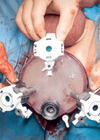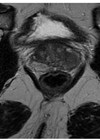
Since its introduction by Dr William Osler in 1890 to the Board of Trustees at John Hopkins Hospital [1], the Halstedian ‘See one, do one, teach one’ has represented a guideline for surgeons worldwide, both for open and laparoscopic surgery, as well as for endoscopic procedures. However, given the lack of a standardised methodology to verify surgeon skills progression, the aforementioned model of training is not sufficient to ensure patient safety.
Indeed, it was shown in a study from the United States that up to 30% of surgeons are not ready for independent surgery in 132 ‘core’ procedures following general surgical training at the end of their residency programme [2].
Despite the increasing uptake of robotic surgery [3] and the fact that advanced skills are required for this modality, exposure to robotic surgery in training remains limited. This may be a factor as to why complication rates after robotic surgery are still high [4]. Across the different surgical specialties, about 10,624 adverse events were registered from robotic procedures between 2000 and 2013 in the United States [4]. Based on this premise, there is an imperative need to define a new surgical training methodology in order to improve patient safety [5,6].
To date, few structured training programmes for robotic surgery in urology have been proposed [7,8], even though the need to provide universally accepted guidelines to standardise surgical training have been addressed in previous consensus statements [9]. These collaborative studies have exclusively focused on urological procedures and on the definition of the training pathways, without providing guidance on other aspects of surgical training: for instance, it is not clear which exercises and metrics are the most effective in distinguishing different levels of experience on the da Vinci® robot [9]. Problems related to certification and implementation of training have not been discussed at all in the literature.
Taken together, the problems related to current robotic surgical training underline the need to move away from learning from experience towards quality assured training pathways. This necessity has driven the foundation of the OLV Robotic Surgery Institute (ORSI) Consensus Meeting on European Robotic Training (OCERT), an international, Delphi-panel study of scientific societies and experts focused on training in robotic surgery. It involves international scientific societies, academies, industries, governmental representatives and insurance companies, creating an ecosystem focused on innovation and education. The aim of OCERT is to create a standardised, international training pathway that is structured, validated, replicable and certified for robotic surgery.
The first step in achieving this goal is to modernise training approaches. In this context, proficiency-based progression (PBP) methodology, through the creation of systematic metrics and metric-based summations built on the performance of experienced and skilled surgeons, has been demonstrated to produce superior surgical skills compared to those of conventional training [10]. By implementing the PBP method, the OCERT aims to establish standardised robotic training by moving away from the Halstedian training approach, and thereby reducing the exposure of patients to the learning curve of the trainee.
The first OCERT took place at the ORSI Academy, Melle, Belgium, in April 2019 and involved 36 board members. During this event, the leading experts in different fields of robotic surgery set up a Delphi consensus meeting. A structured group of individuals answered questionnaires in two rounds about main topics. After the first round of voting, the experts discussed the topics and the questions where a consensus was not reached; based on this panel discussion the consensus statements were revised [11]. The latter roundtable discussion created the final version of the questionnaire. During this first meeting, the discussion focused on three main topics: training standardisation pathways, implementation prerequisites and certification. The recommendations of OCERT are summarised below.
With regards to standardisation of pathways, the panel agreed that it is fundamental to distinguish between different level of baseline expertise to set up proper training, starting from instruction for use (IFU) up to procedure-specific advanced training. Using this template, specialty societies may be able to set up procedure-specific courses according to surgeon proficiency level. In order to ensure standardisation of training level, PBP metrics based on objectively assessed performances of experts should be applied. Societies should also peer review the IFU produced by manufactures.
Training certifications may be obtained only when pre-established benchmark outcomes are achieved, and societies must be responsible for ensuring that these are met. Individual training centres have to be accredited following international standards recognised by societies. Funding training should involve all stakeholders involved (i.e. industries, societies, trainees and governments) who share the common aim of improving patient outcomes.
Before starting with hands-on practice, trainees should complete certain benchmarked e-learning tests. All programmes should deliver an internationally recognised curriculum with performance standards, be certified by academic institutions / research organisations, and after successful completion of robotic training courses, trainees should receive a certificate approved by professional societies and / or universities. All robotic training must begin with basic generic tasks using a PBP approach, and then become more precisely validated for structured performance metrics.
The characteristics of the training can be summarised as the ‘4 As’: Awareness, Agreement, Accessibility and Affordability. Awareness of the need for quality training; Agreement that the training must be managed by scientific societies; Accessibility of the training to all the trainees in order to raise the quality of care; and Affordability of training by combined funding from national health systems, societies and industries. In summary, a PBP-based European robotic training license, which can be certified locally and provided in every surgical curriculum, must be defined. OCERT I laid the foundation for standardising robotic surgical training by drawing up recommendations to shorten the learning curve of trainees.
Further work is required on this though. OCERT II was held in August 2019 and this again reviewed the topics of training pathways, PBP training, certification, financing and how these should be delivered. One of the critical points that was highlighted in OCERT II was the distinction between basic device training (BDT) (also called instruction for use) and basic skills training (BST). The participants agreed that robotic specific BDT provided by manufactures should be supported and implemented by PBP based metrics. These are needed in order to define benchmarks for quality-assured performances in basic technology training. Moreover, BDT should be attended by the entire OR team. On the other hand, BST represents a single console surgeon training pathway that should be system specific and generalisable across all surgical specialties. Here, surgical societies have a crucial role in proposing and supervising these BST modules. Moreover, as a corollary of what was stated in OCERT I, pre-course e-learning modules should include theoretical, physiological and anatomical information.
Certification to perform a surgical procedure with a specific robot is mandatory for the lead surgeon and a timeline to complete the training must be agreed on to ensure high quality training. In order to obtain internationally agreed certification, the training pathways should be objectively assessed and universally replicable. Here, the full implementation of PBP training (both for basic and advanced trainings) based on objective metrics will represent a critical step. As such, the OCERT has the role to continuously support the role of PBP training by promoting and supporting top quality scientific research, ideally represented by randomised clinical trials. Additionally, the panel used the concept of a portfolio which is a collection of documents that provides evidence of successful completion of each PBP training module. Also, certification must have a time-defined term of validity; consequently, recertification is necessary to ensure high level training.
The panel agreed to set up a taxonomy for training that would help the communication between scientific societies, industries and government. Of note, one of the critical concepts that was stressed was the difference between proctor, preceptor and mentor in the training process. Proctor was defined as someone who is independent to the trainee and he / she is responsible for evaluating the performance of the trainee. This can potentially be done either locally or remotely. The proctor must also have the prerequisite skills to perform the assessed procedure, which include the defined steps and an in-depth understanding of the errors of the procedure. A preceptor is defined as someone who has responsibility for training the trainee and who has shared responsibility for the patient. A preceptor must have the prerequisite knowledge of the procedure that he / she is assessing, and can take over the operation, if needed. A mentor is an experienced surgeon who helps, gives advice and shares knowledge with younger or less experienced surgeons.
Despite this big effort, the road to optimise robotic surgery training is still long. It is planned that the first two OCERT meetings will be followed by OCERT III. Here, the roundtable will discuss the characteristics of the trainers and their necessary skills. The plan is to hold detailed consultations on the specifics of the ‘train the trainer’ course, the number of courses needed, the implementation of courses and tools e.g. technicians, equipment, scenarios, and recertification timelines. PBP-metrics will be developed and proposed for BDT and BST and their performances will be tested among the participants. Moreover, participants will also focus on defining criteria for standardised specialty- and procedural-specific training. The ORSI education committee and the role of industry and specialty societies will be discussed, with particular focus on procedural certification criteria. Finally, we will discuss the legal input required for certification and the finance models.
In conclusion, the work is still in progress and there is much to achieve yet, but the international panel attending the OCERT meetings is progressively achieving consensus for a standardised way of robotic surgical training that will be used and regulated by scientific societies to guarantee optimal standard of robotic surgery across different specialties and countries.
References
1. Rankin JS. William Stewart Halsted: a lecture by Dr Peter D Olch. Ann Surg 2006;243(3):418-25.
2. George BC, Bohnen JD, Williams RG, et al. Readiness of US General Surgery Residents for Independent Practice. Ann Surg 2017;266(4):582-94.
3. Mazzone E, Mistretta FA, Knipper S, et al. Contemporary National Assessment of Robot-Assisted Surgery Rates and Total Hospital Charges for Major Surgical Uro-Oncological Procedures in the United States. Journal of Endourology 2019;33(6):438-47.
4. Alemzadeh H, Raman J, Leveson N, et al. Adverse Events in Robotic Surgery: A Retrospective Study of 14 Years of FDA Data. PLoS ONE 2016;11(4):e0151470.
5. Brook NR, Dell’Oglio P, Barod R, et al. Comprehensive training in robotic surgery. Curr Opin Urol 2019; 29(1):1-9.
6. Palagonia E, Mazzone E, De Naeyer G, et al. The safety of urologic robotic surgery depends on the skills of the surgeon. World J Urol 2019 [Epub ahead of print].
7. Ahmed K, Khan R, Mottrie A, et al. Development of a standardised training curriculum for robotic surgery: a consensus statement from an international multidisciplinary group of experts. BJU Int 2015;116(1):93-101.
8. Volpe A, Ahmed K, Dasgupta P, et al. Pilot Validation Study of the European Association of Urology Robotic Training Curriculum. Eur Urol 2015;68(2):292-9.
9. Larcher A, Turri F, Bianchi L, et al. Virtual Reality Validation of the ERUS Simulation-based Training Programmes: Results from a High-volume Training Centre for Robot-assisted Surgery. Eur Urol 2019;75(5):885-7.
10. Gallagher AG. Metric-based simulation training to proficiency in medical education:- what it is and how to do it. Ulster Med J 2012;81(3):107-13.
11. Collins JW, Levy J, Stefanidis D, et al. Utilising the Delphi Process to Develop a Proficiency-based Progression Train-the-trainer Course for Robotic Surgery Training. European Urology 2019;75(5):775-85.
Declaration of competing interests: None declared.






